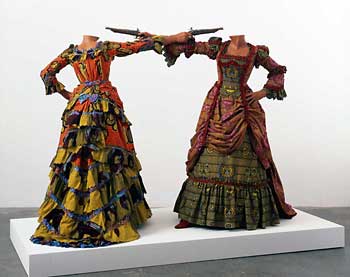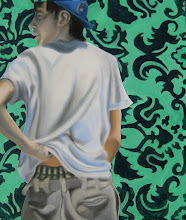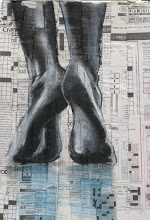Mesopotamia – Egyptian Study Guide
What you need to know:
· Mesopotamia – ziggurat (construction, points of the compass, axis, usage, function), sacred spaces (and examples), hierarchy, cuneiform and usage, political and social organization of Sumerian cities, stele (function/recognition/identification), canon (definition and examples of), function of Sumerian votive offerings, Standard of Ur, Ziggurat of Ur, symbolism of the bull
· Egyptian – periods (general dates for Old/Middle and New), iconographic symbol of Lower/Upper Egypt, Book of the Dead (scroll buried with the wealthy) and function, 6 contextual issues (historical facts/beliefs) for Egyptian art, effects of these on Egyptian culture (art/architecture), narrative devices used in composition, conceptual reality vs optical reality
· 4 ways of thinking about context
· Devices used to declare sacred space: exclusivity, material wealth/decoration, ritual and ceremony (liturgy), history/religious event
· Sculpture – terms (relief/additive/subtractive/casting), what to talk about when you analyze sculpture (icon, monument, historical record of event/person, decorative element/architecture, aesthetic ideal (canon), attempt to measure time/space/nature
· Painting – terms/function
· Vocabulary – polytheism, monotheism, votive (surrogate), cuneiform, bas relief, stone courses, atlantids, hypostyle hall, clerestory, corbelling, “continuous lintel” (entablature), canon/canon of proportion, ben-ben, ka, Imhotep, Akhenaton/Amarna, iconoclast, colonnade, pylon, engaged column
Images to know:
· Mesopotamia – Warka Vase, Sumerian Votive offerings, Victory Stele of Naram-Sin, Standard of Ur, Ziggurat of Ur, Gudea, Stele of Hammurabi, Lamassu, Assyrian archers (relief)
· Egyptian – Palette of King Narmer, Stepped Pyramid, Great Pyramids/Gizeh, Statue of Khafre, Menkaure and Khamerernebty, Seated Scribe, Ti watching a hippopotamus hunt, rock cut tombs (images of), Mortuary Temple of Hatshepsut, Hatshepsut with offering jars, Senmut block statue, Temple of Ramses, pylon temple, frescoes – tomb of Nebamun, Akhenaton images, Tutankhamen death mask, Book of the Dead, Mentuemhet (Late Period)
Tuesday, September 13, 2011
AP Art History Quiz Week 3
Slide List Week 9/6/10
AP Art History
You are responsible to know the information on the images below, including the time period they were created in. Quizzes will be graded on complete accuracy of information.
1. Votive Offerings (worshippers), Square Temple at Eshnunna, Iraq, 2700 BCE
2. Stele of the Vultures (Victory Stele of Eannatum), Syria 2600-2500 BCE
3. Standard of Ur, Royal Cemetery, Ur, Iraq, 2600 BCE
4. Victory Stele of Naram-Sin, Susa, Iran, 2254-2218 BCE
5. Seated Statue of Gudea holding temple plan, Girsu, Iraq, 2100 BCE
6. Stele with law code of Hammurabi, Susa, Iran, 1780 BCE
7. Statue of Queen Napir-Asu, Susa, Iran, 1350-1300 BCE
8. Lamassu from citadel of Sargon II, Iraq, 720-705 BCE
9. Ashurbanipal hunting lions, relief from North Palace, Iraq, 645-640 BCE
10. Palace of Shapur I, Iraq, 250 CE
Period created:
1. _______________________________________
2. _______________________________________
3. _______________________________________
4. _______________________________________
5. _______________________________________
6. _______________________________________
7. _______________________________________
8. _______________________________________
9. _______________________________________
10. _______________________________________
AP Art History
You are responsible to know the information on the images below, including the time period they were created in. Quizzes will be graded on complete accuracy of information.
1. Votive Offerings (worshippers), Square Temple at Eshnunna, Iraq, 2700 BCE
2. Stele of the Vultures (Victory Stele of Eannatum), Syria 2600-2500 BCE
3. Standard of Ur, Royal Cemetery, Ur, Iraq, 2600 BCE
4. Victory Stele of Naram-Sin, Susa, Iran, 2254-2218 BCE
5. Seated Statue of Gudea holding temple plan, Girsu, Iraq, 2100 BCE
6. Stele with law code of Hammurabi, Susa, Iran, 1780 BCE
7. Statue of Queen Napir-Asu, Susa, Iran, 1350-1300 BCE
8. Lamassu from citadel of Sargon II, Iraq, 720-705 BCE
9. Ashurbanipal hunting lions, relief from North Palace, Iraq, 645-640 BCE
10. Palace of Shapur I, Iraq, 250 CE
Period created:
1. _______________________________________
2. _______________________________________
3. _______________________________________
4. _______________________________________
5. _______________________________________
6. _______________________________________
7. _______________________________________
8. _______________________________________
9. _______________________________________
10. _______________________________________
Subscribe to:
Posts (Atom)






